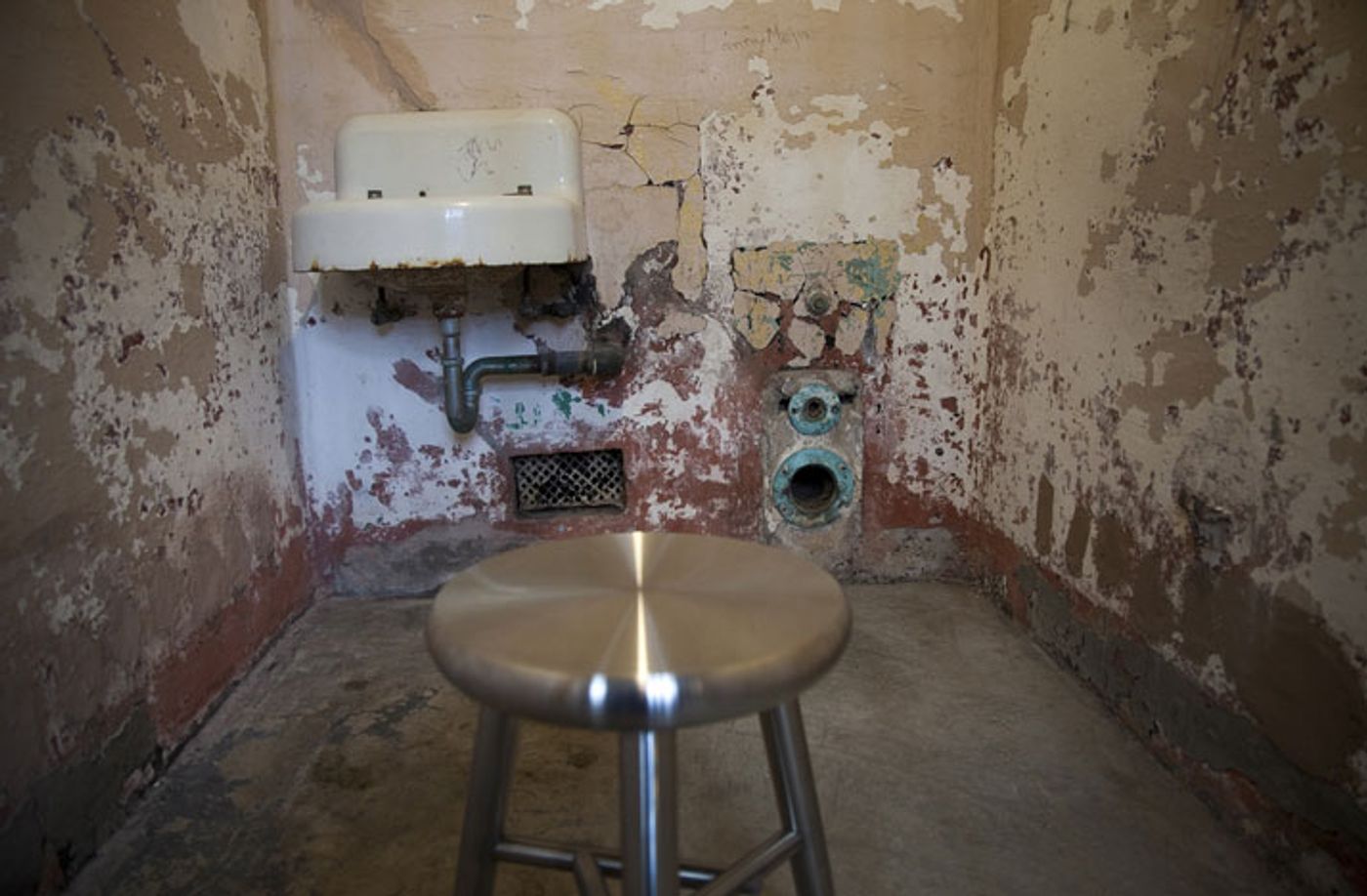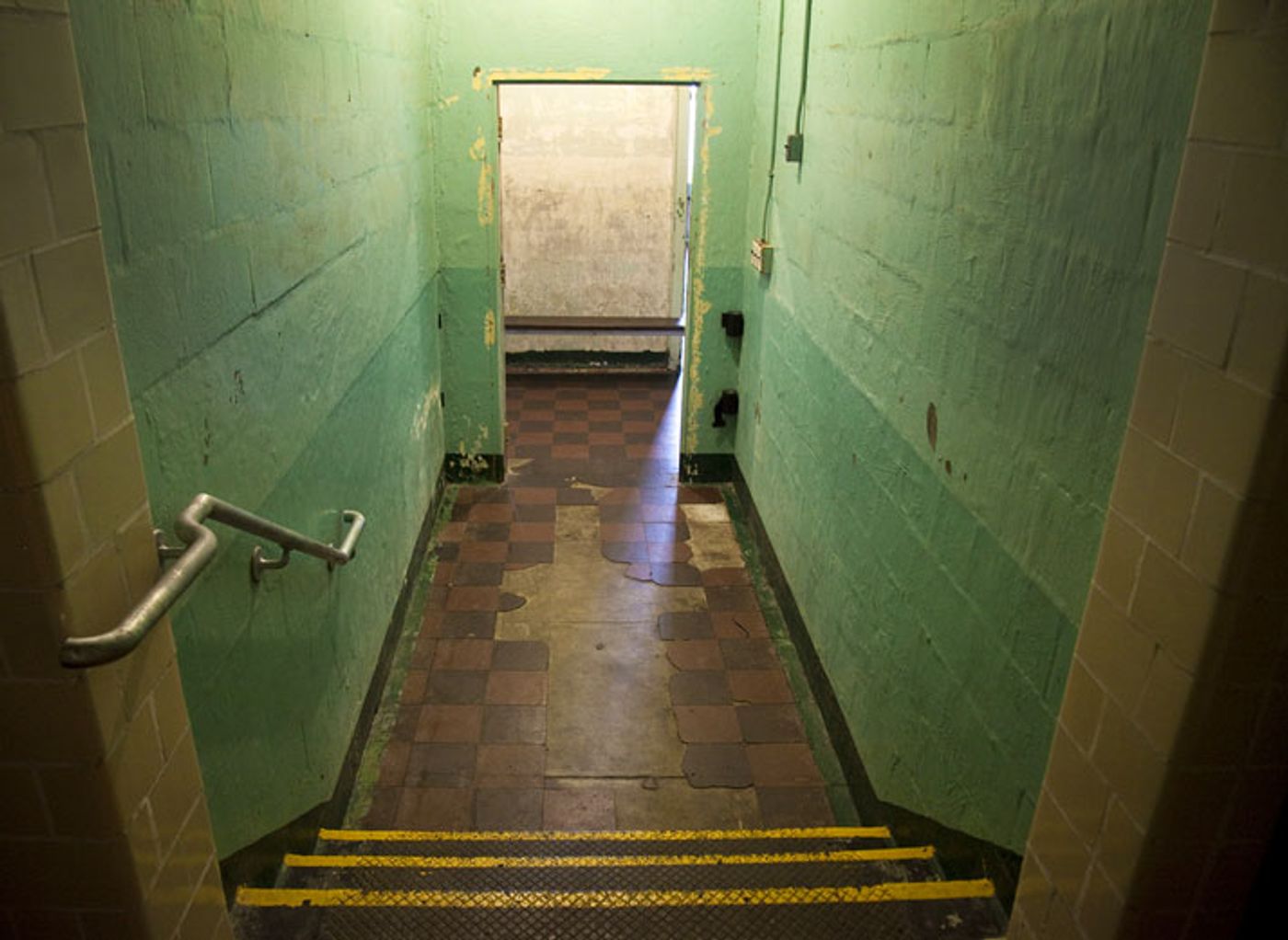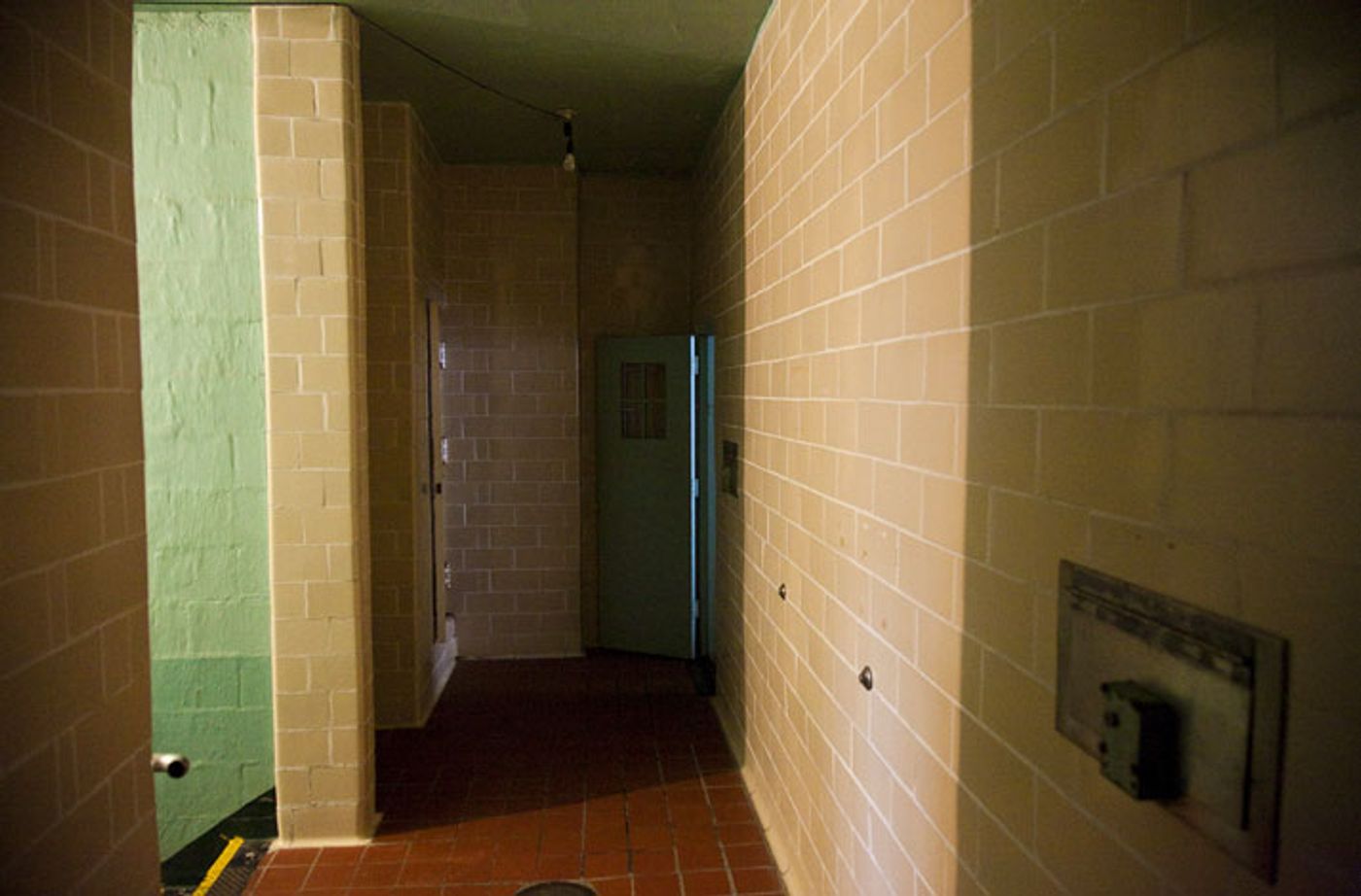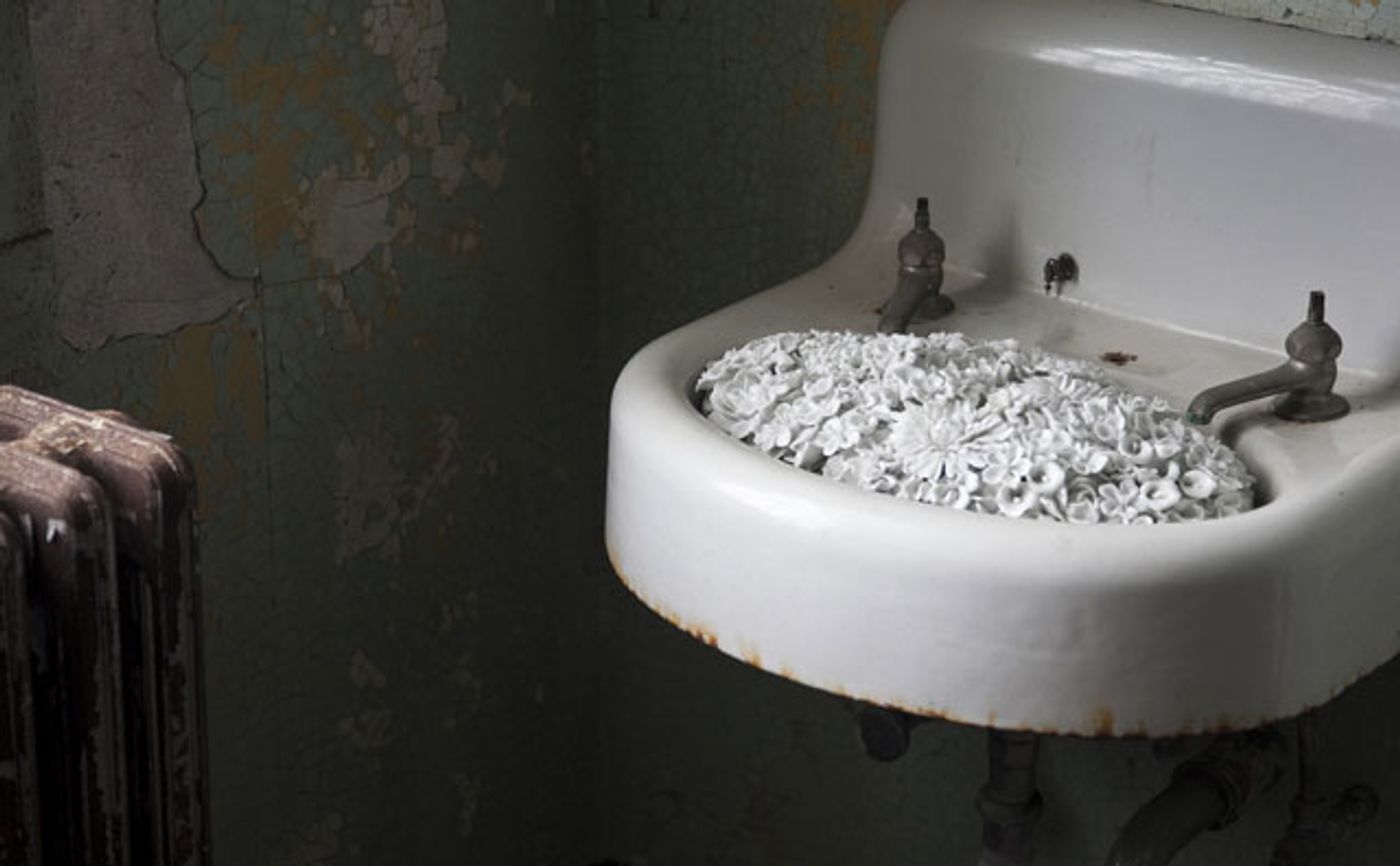
Artist Ai Weiwei @Large on Alcatraz
Words by Gerard McGuickin
Location
@Large: Ai Weiwei on Alcatraz is an exhibition of new works by the renowned Chinese artist, in situ at the infamous and former United States Penitentiary. Raising questions about human rights and freedom of expression, @Large resonates far beyond the bounds of Alcatraz Island. Indeed the irony of this exhibition is that Ai Weiwei was unable to be physically present at Alcatraz during the installation and premiere of @Large. As a vocal critic of the Government of China, Weiwei, who was covertly detained by the Chinese authorities for 81 days in 2011, has had his passport commandeered and is not allowed to leave the country.
On the subject of this exhibition, Ai Weiwei made the following acute observation: ''The misconception of totalitarianism is that freedom can be imprisoned. This is not the case. When you constrain freedom, freedom will take flight and land on a windowsill.'' As an artist, Weiwei chooses to fight for and protect freedom of speech. This is the very essence of his creativity. As a result, his work encourages the viewer to question, reflect on and challenge that with which they are confronted. Weiwei considers his art as a starting point, a catalyst and not the culmination of a creative process. It is an act of conscience, deliberately intended to fight for freedom.
@Large: Ai Weiwei on Alcatraz
27 September 2014 - 26 April 2015
on Alcatraz Island, San Francisco Bay, CA
Organised by FOR-SITE Foundation
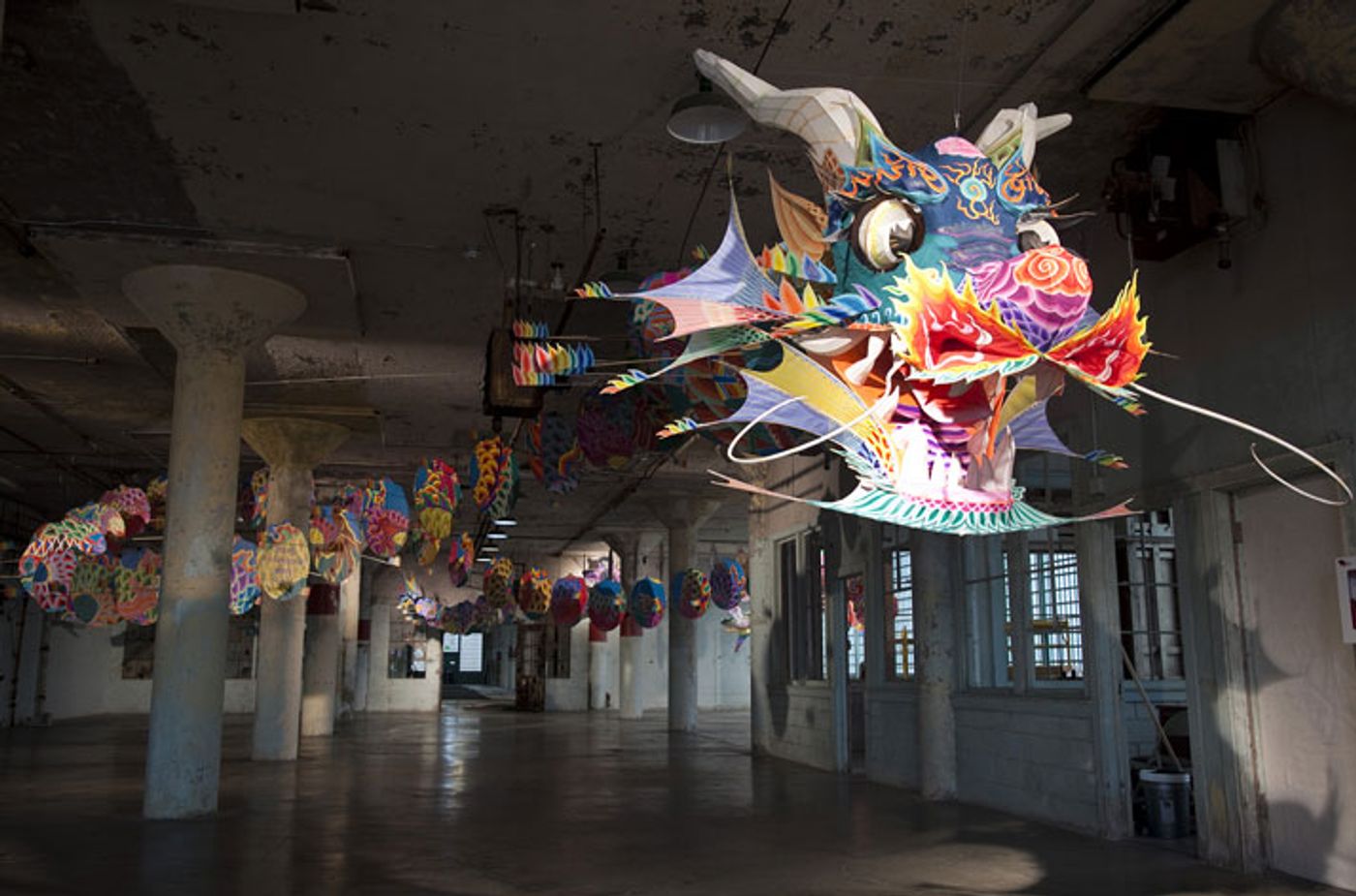
Ai Weiwei, With Wind, 2014 (installation view, New Industries Building, Alcatraz); photo: Jan Stürmann.
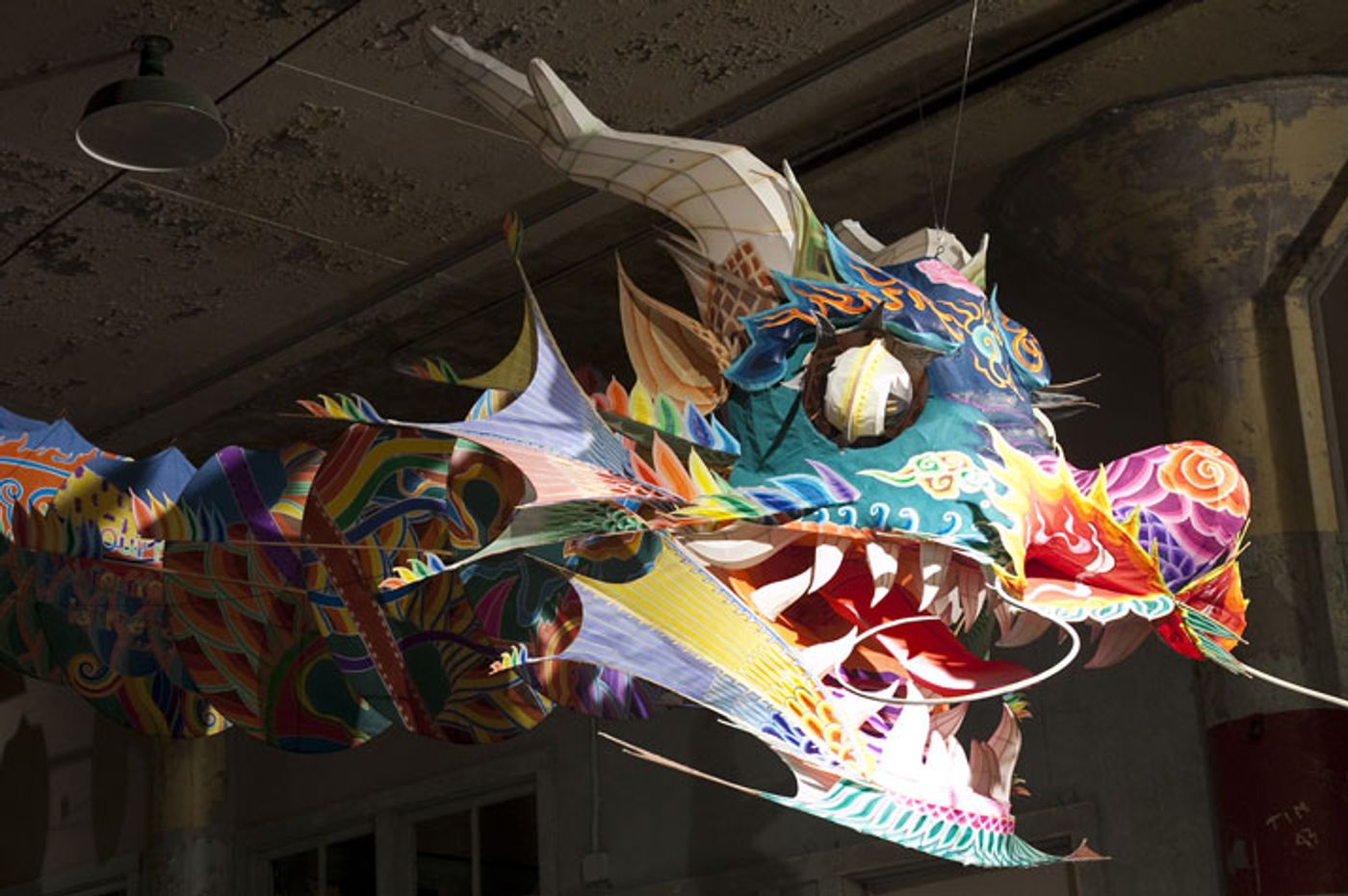
Ai Weiwei, With Wind, 2014 (installation view, New Industries Building, Alcatraz); photo: Jan Stürmann.
The FOR-SITE Foundation (a nonprofit U.S. organisation that engages audiences through artistic collaborations on national parkland) in partnership with the (U.S.) National Park Service and the Golden Gate National Parks Conservancy, invited Ai Weiwei to create a series of new works for a major exhibition on Alcatraz. In @Large the prison environment (namely Alcatraz) is regarded as wholly representative and symbolic. Having one-time visited Alcatraz, this writer was conscious of its sheer physical mass, separation from society and the oppressive sense of hopelessness. The choice to make Alcatraz Island the backdrop for the exhibit was an extremely potent one that provides the context for a number of pertinent questions. For example: What does it mean to be imprisoned (ergo what is freedom)? What is the meaning of justice? How do we manifest self-identity and self-expression?
Unable to visit Alcatraz, Ai Weiwei worked with the FOR-SITE Foundation to develop the artworks for @Large in his Beijing studio. A series of sculpture, sound and mixed media installations were then transferred to the former prison where they were assembled for the purposes of the exhibition; Weiwei was sent photographs of the exhibit’s progress during the intricate operation of fitting it together. Artworks that make up the entire display were installed across four Alcatraz locations: the New Industries Building (a laundry and manufacturing facility where inmates worked), a group of cells in A Block, the hospital and the dining hall as follows:
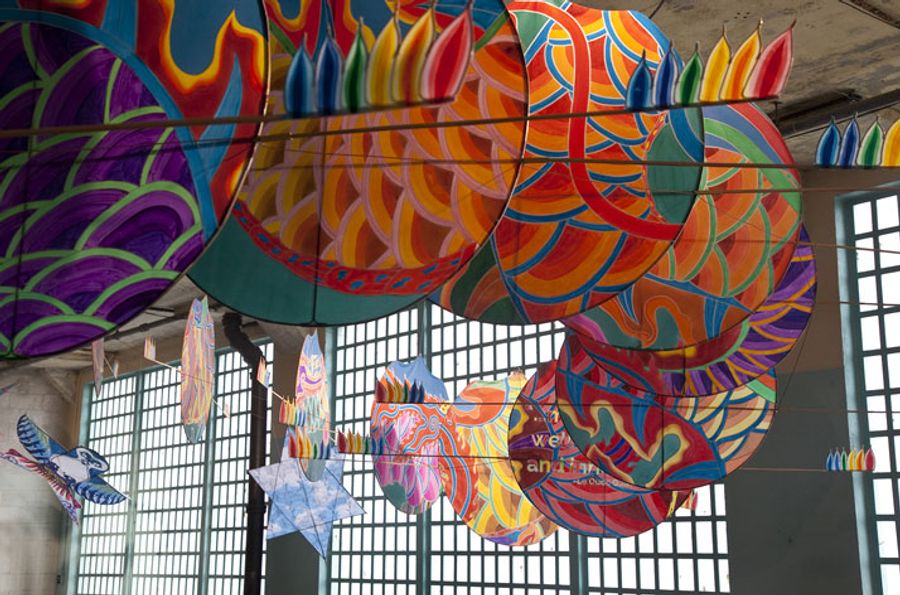
Ai Weiwei, With Wind, 2014 (installation view, New Industries Building, Alcatraz); photo: Jan Stürmann.
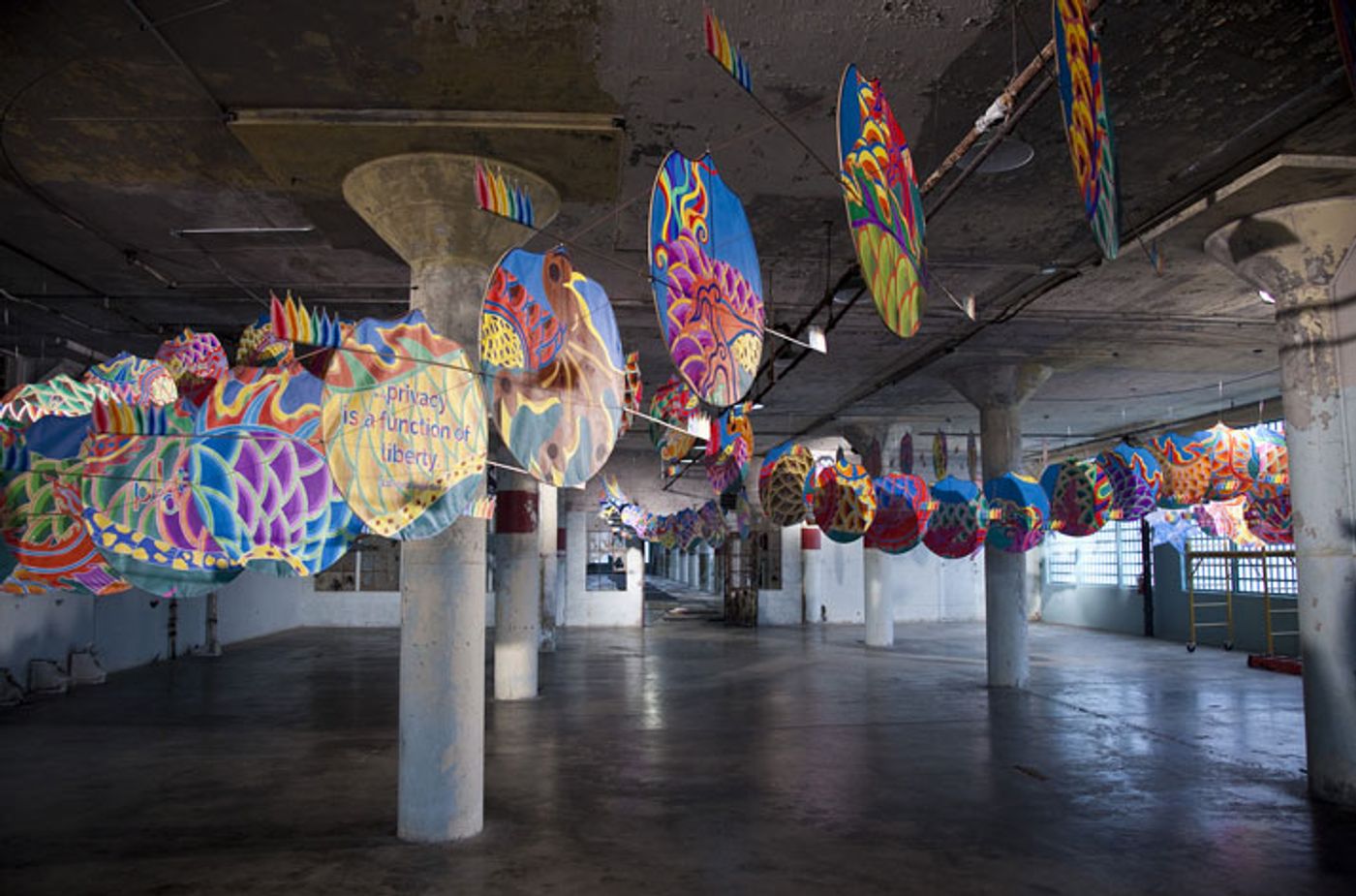
Ai Weiwei, With Wind, 2014 (installation view, New Industries Building, Alcatraz); photo: Jan Stürmann.
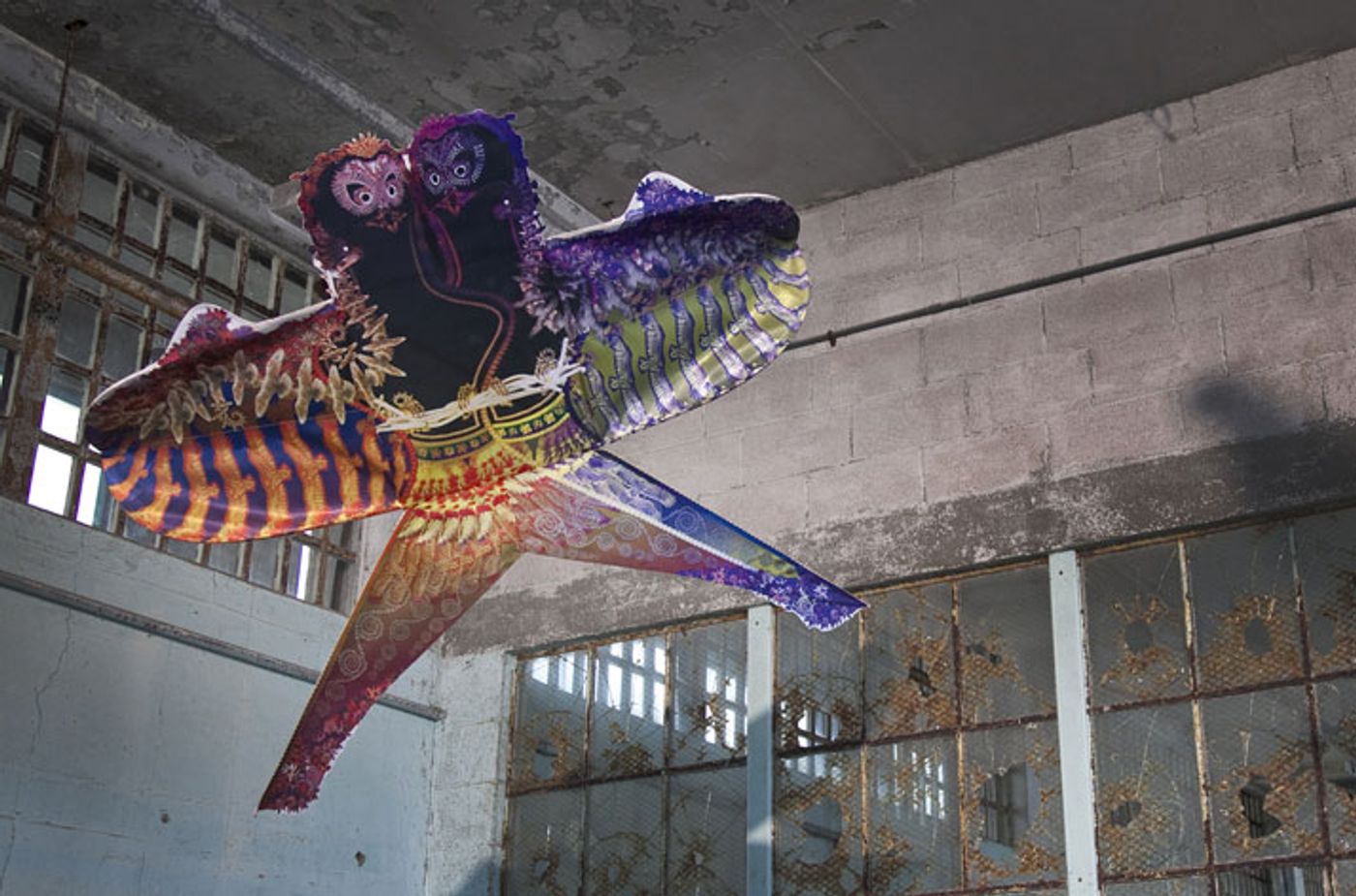
Ai Weiwei, With Wind, 2014 (installation view, New Industries Building, Alcatraz); photo: Jan Stürmann.
With Wind
A genuinely striking and contemporary form of the traditional Chinese dragon kite has been unfurled within the New Industries Building. The dragon is almost sunny in its disposition, energetic, unencumbered and joyous. Individual kites making up its body comprise quotations by imprisoned or exiled activists (Weiwei included) such as Edward Snowden (who says ''… privacy is a function of liberty'').
Blossom
Functional fixtures found in a number of the hospital ward cells and medical offices were transformed into fine porcelain bouquets (reflecting the symbolic gesture of sending a bouquet to someone who is unwell). The series of ceramic flowers designed by Ai Weiwei has been used to fill sinks, toilets and bath tubs. The impact is on the one hand graceful and on the other cold, almost emblematic of death.
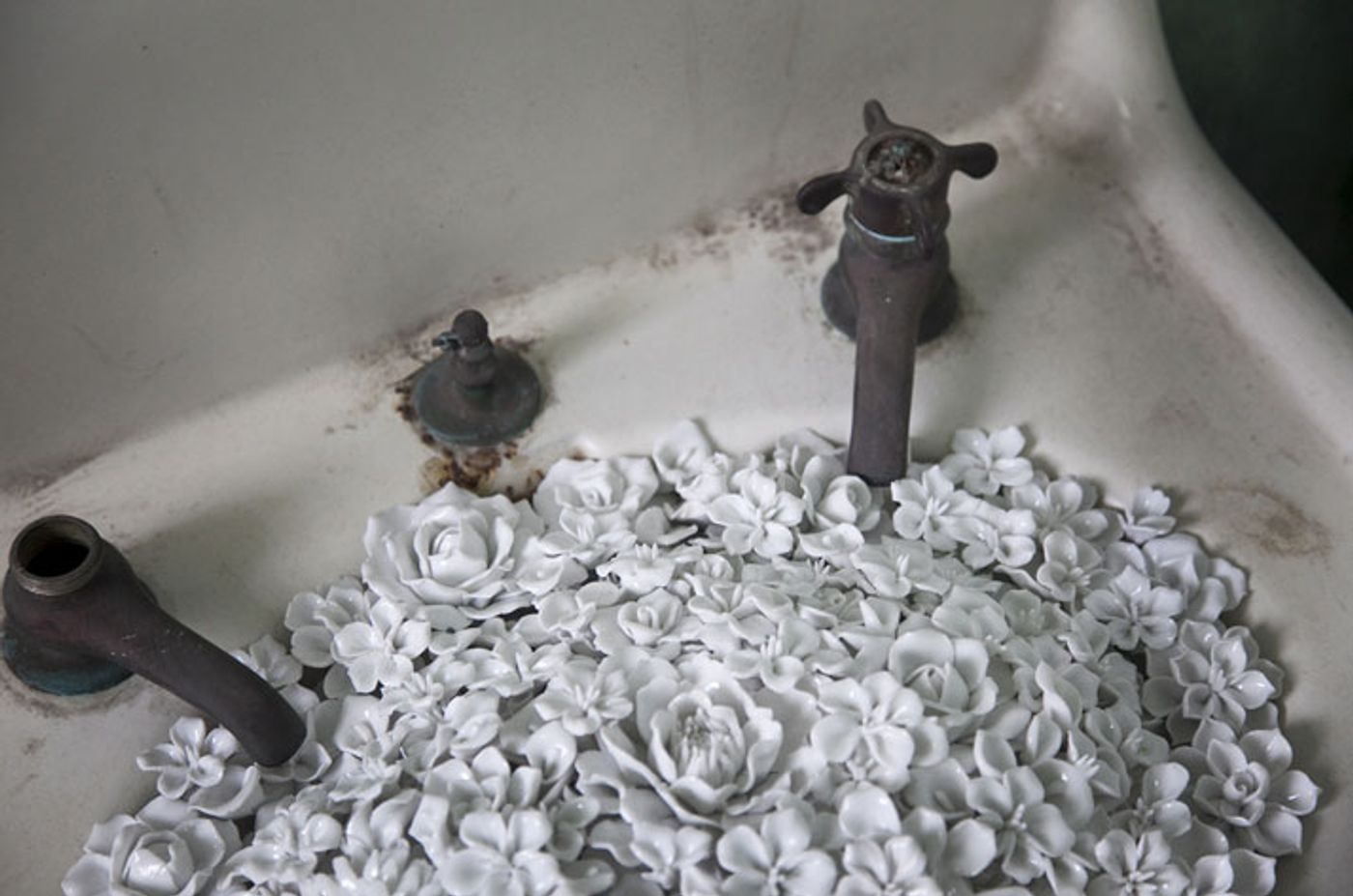
Ai Weiwei, Blossom, 2014 (installation detail, Alcatraz Hospital); photo: Jan Stürmann.
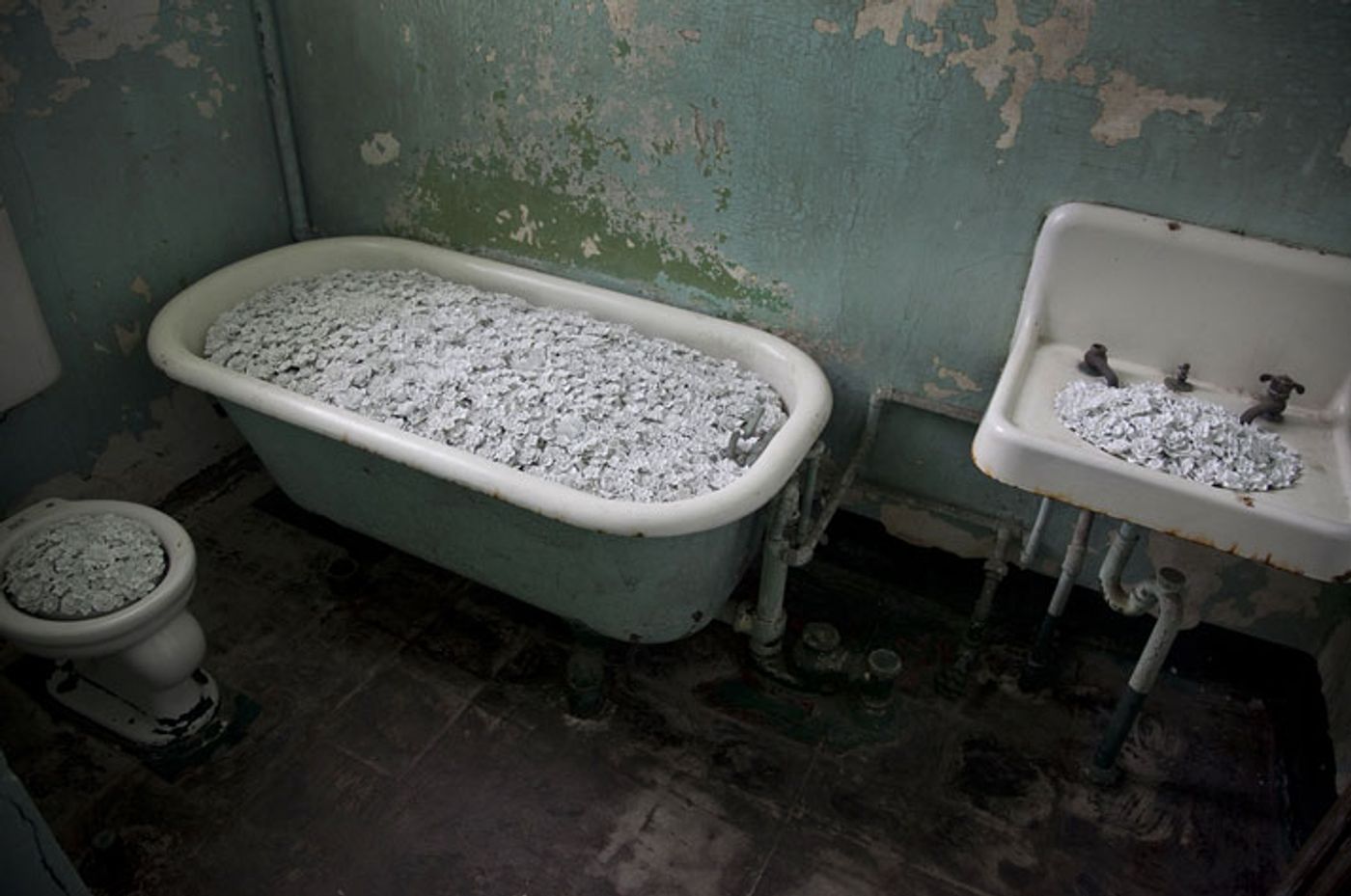
Ai Weiwei, Blossom, 2014 (installation detail, Alcatraz Hospital); photo: Jan Stürmann
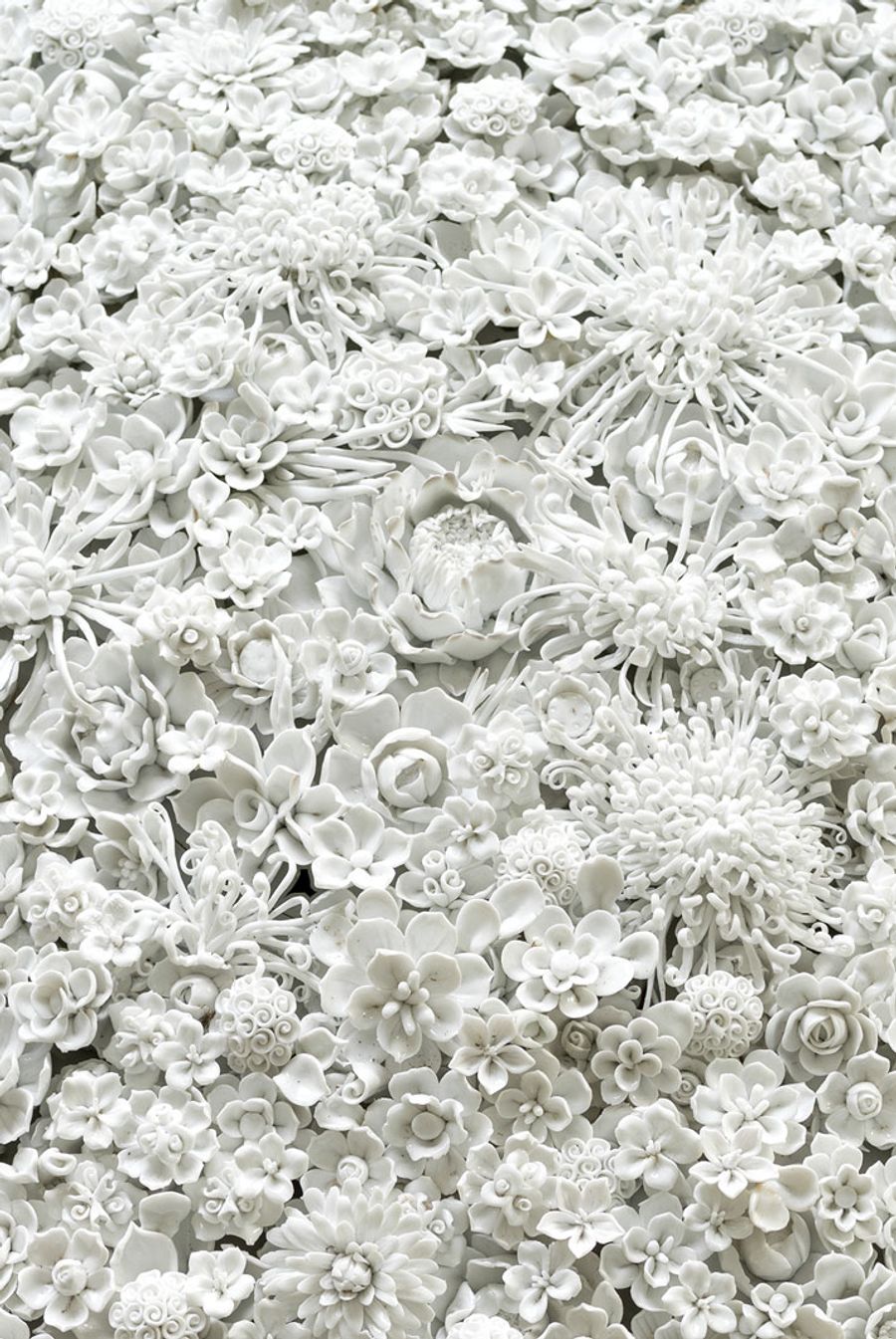
Ai Weiwei, Blossom, 2014 (installation detail, Alcatraz Hospital); photo: Jan Stürmann.
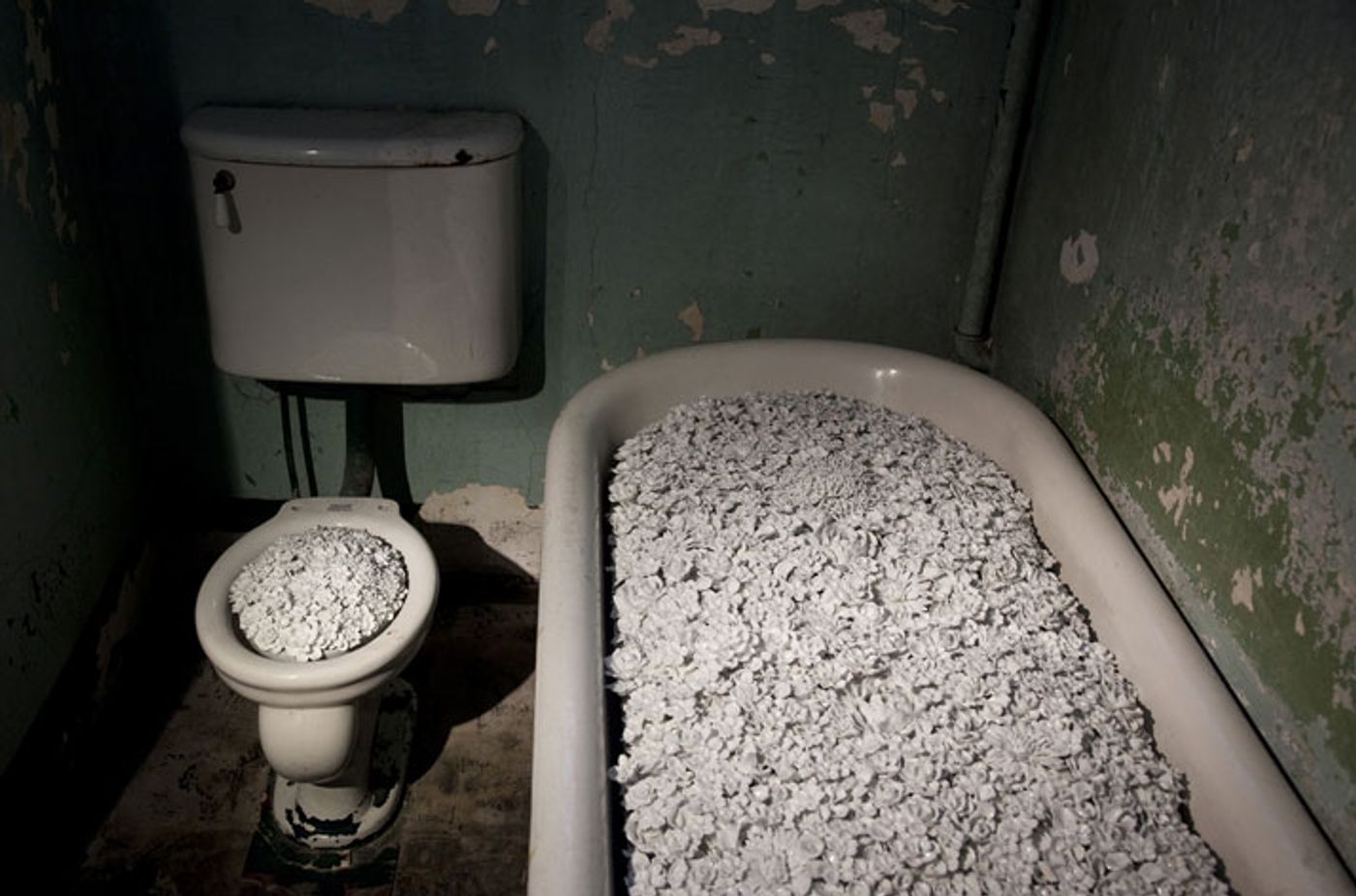
Ai Weiwei, Blossom, 2014 (installation detail, Alcatraz Hospital); photo: Jan Stürmann.
Trace
Placed at the rear of the New Industries Building, viewers are confronted with 176 vibrant facial images laid out flat on the floor. They are portraits of the many people around the world imprisoned or exiled because of their beliefs or affiliations; Ai Weiwei refers to them as ''heroes of our time''. Making this visual document of political prisoners (or prisoners of conscience) all the more remarkable is the fact that each image was created using Lego bricks. View the names of the 'Trace' individuals here.
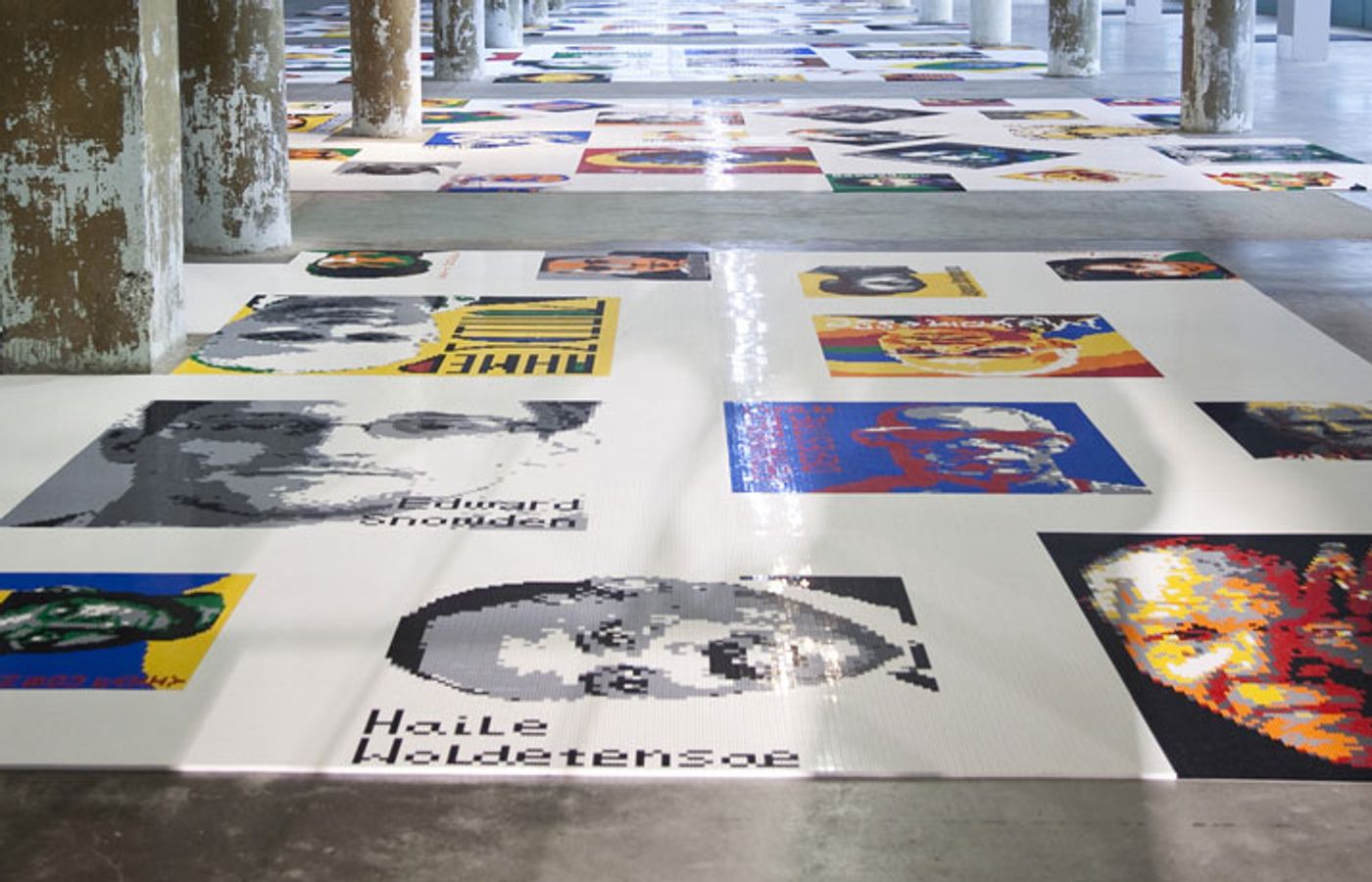
Ai Weiwei, Trace, 2014 (installation view, New Industries Building, Alcatraz); photo: Jan Stürmann.
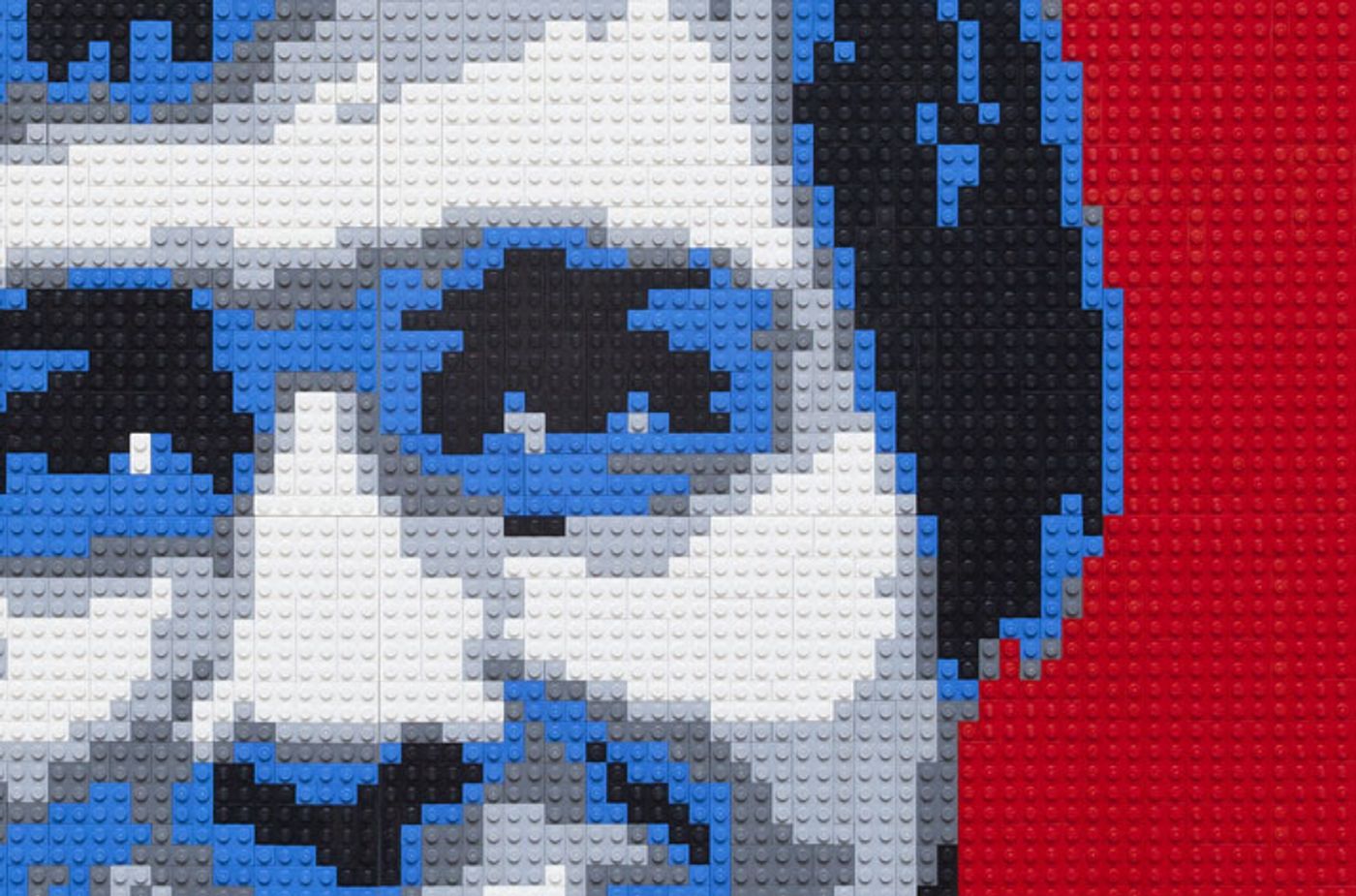
Ai Weiwei, Trace, 2014 (installation view, New Industries Building, Alcatraz); photo: Jan Stürmann.
Refraction
A huge metal wing has been purposely constrained within the lower gun gallery of the New Industries Building, its design based on the structure of an actual bird’s wing. Weiwei has substituted feathers with reflective panels that were once used on solar cookers in Tibet (a region at variance with Chinese rule). Similar to 'With Wind', 'Refraction' employs the visual symbolism of flight to bring to mind the discord between freedom and imprisonment.
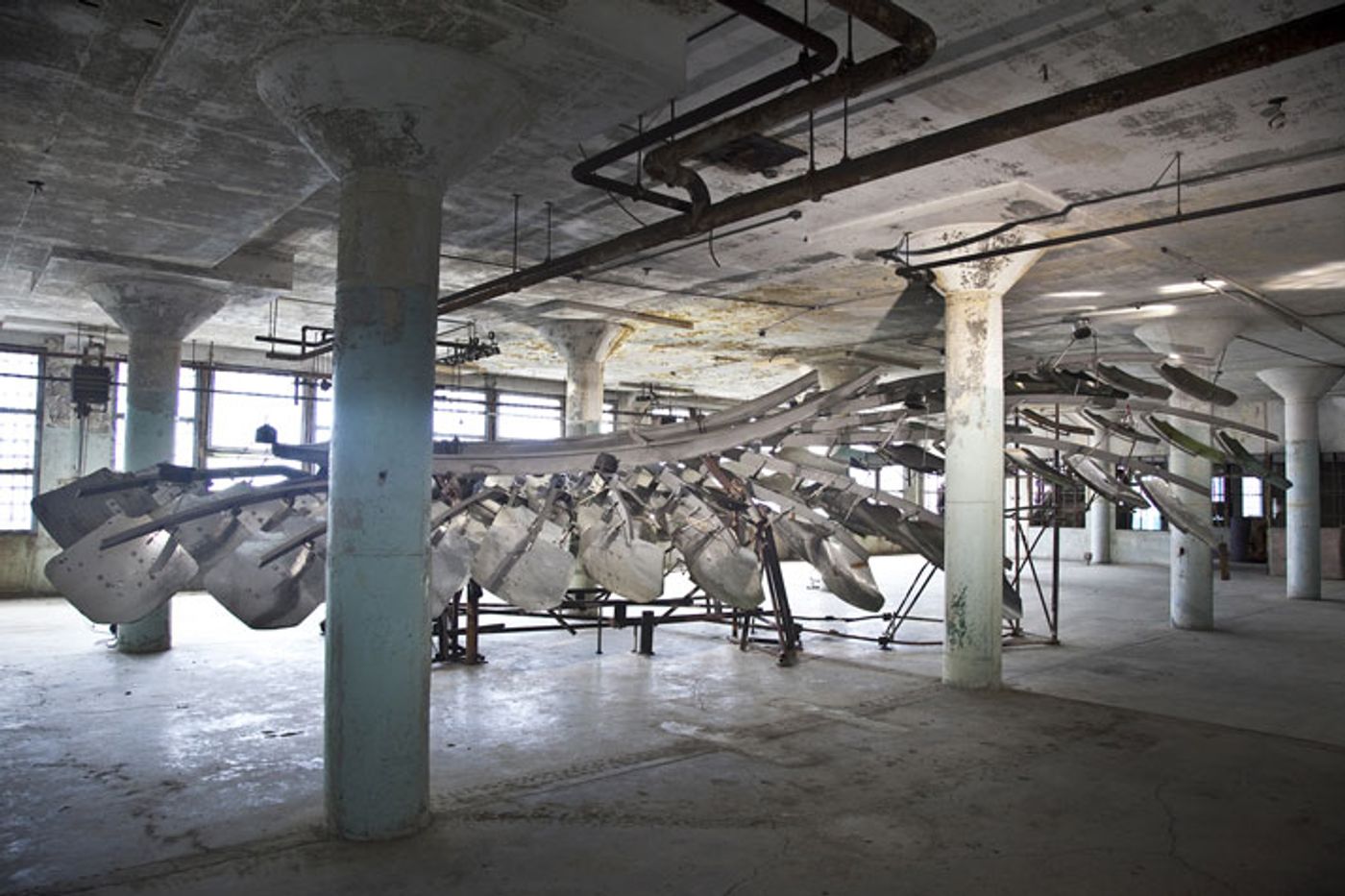
Ai Weiwei, Refraction, 2014 (installation view, New Industries Building, Alcatraz); photo: Jan Stürmann.
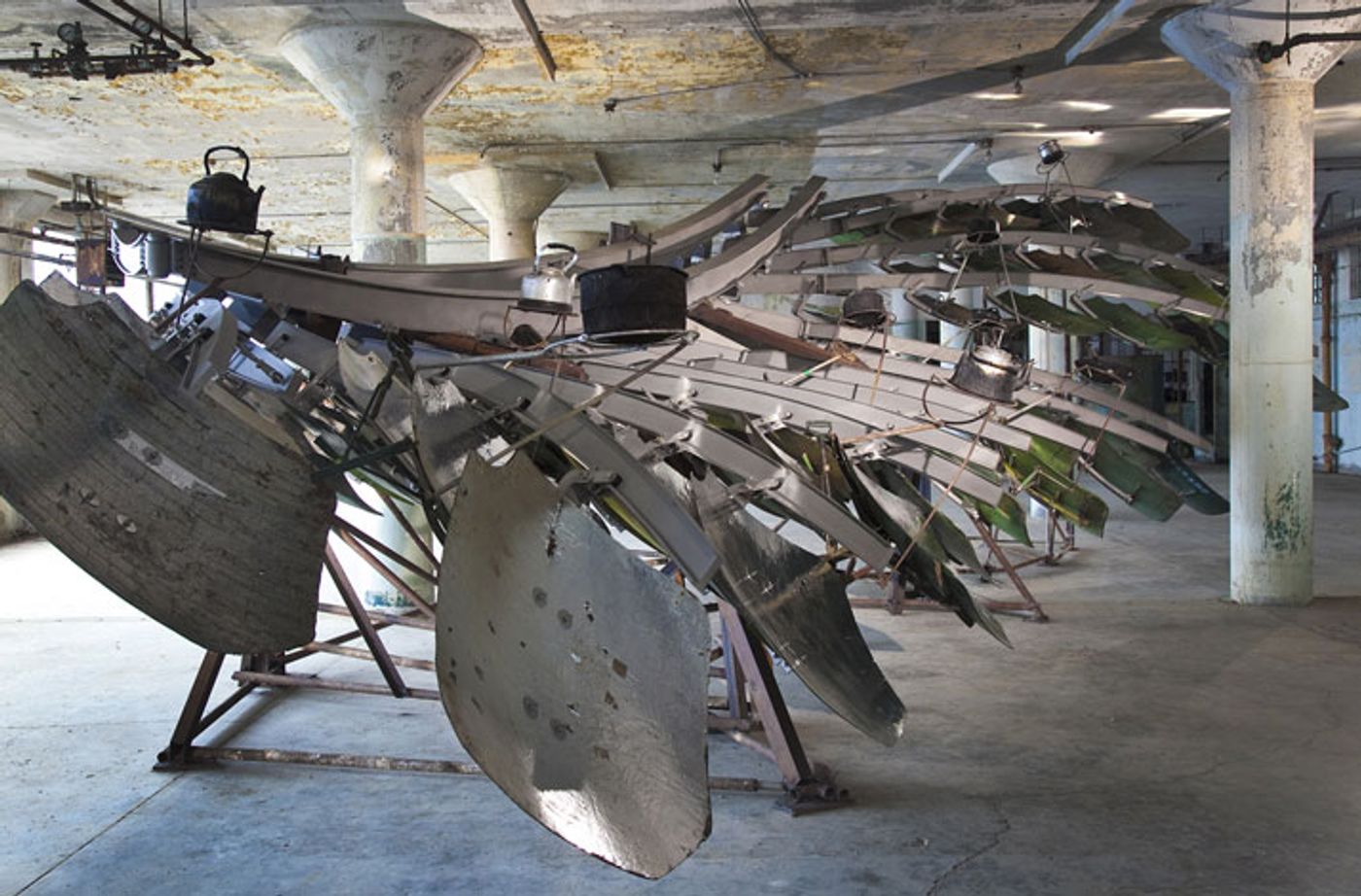
Ai Weiwei, Refraction, 2014 (installation view, New Industries Building, Alcatraz); photo: Jan Stürmann.
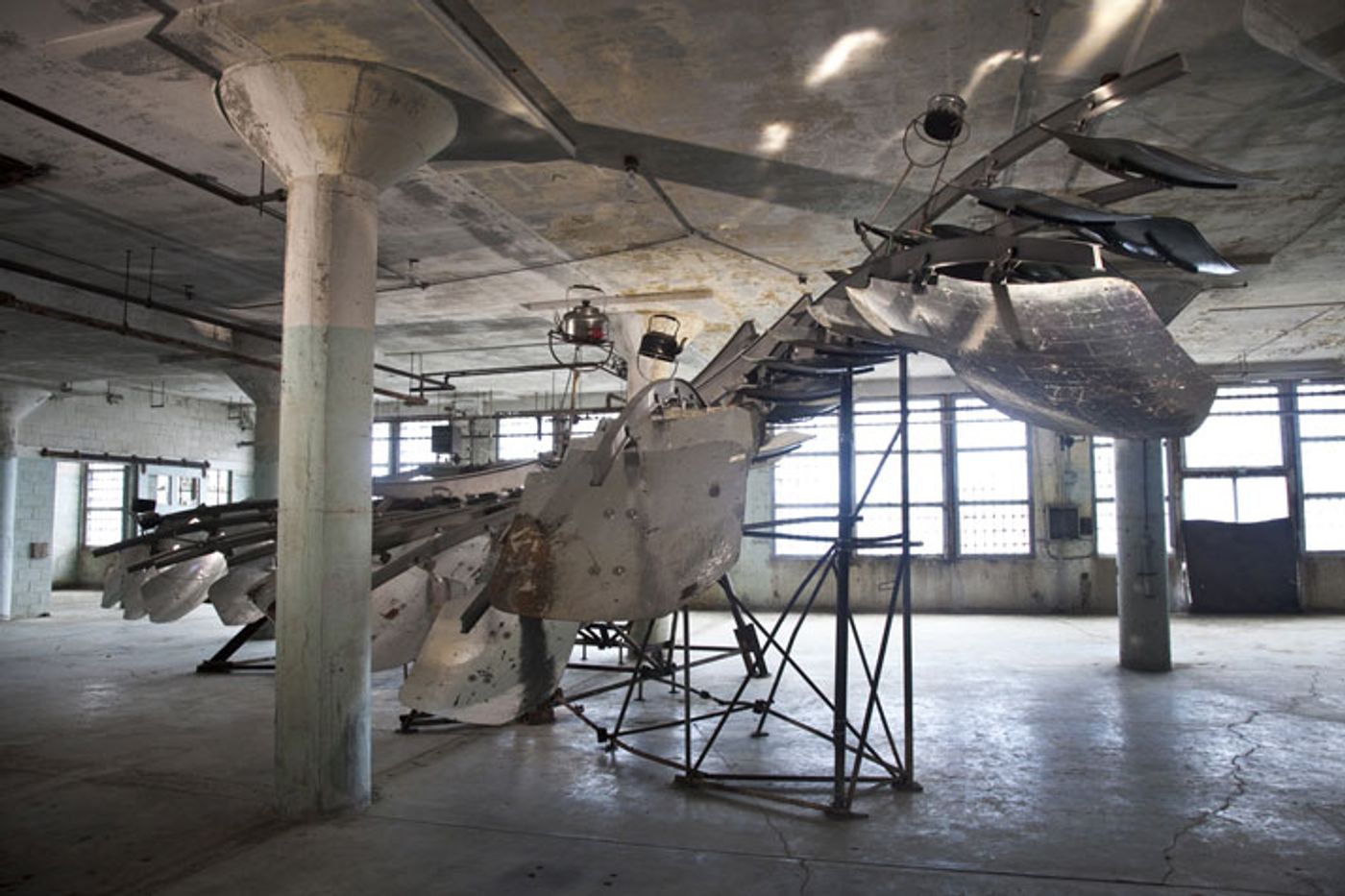
Ai Weiwei, Refraction, 2014 (installation view, New Industries Building, Alcatraz); photo: Jan Stürmann.
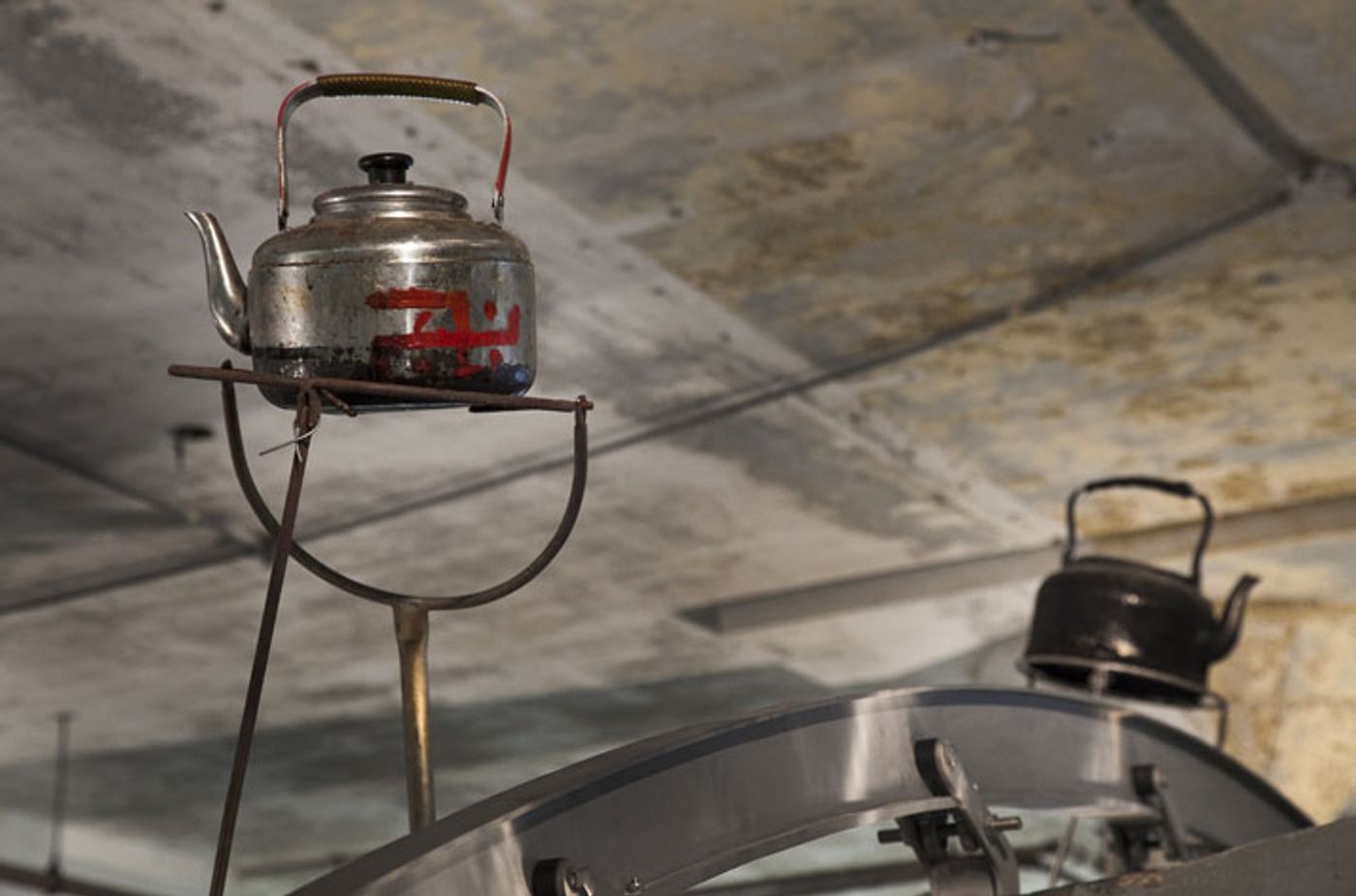
Ai Weiwei, Refraction, 2014 (installation view, New Industries Building, Alcatraz); photo: Jan Stürmann.

Refraction under construction in Beijing; photo: Jan Stürmann.
Stay Tuned
A sound installation extending across twelve desolate, decaying and confined cells in the A Block, 'Stay Tuned' invites the visitor to be seated and listen to spoken words and music by people detained for creatively expressing their beliefs. Ai Weiwei has chosen twelve diverse recordings including those by Pussy Riot, the Russian feminist punk band and Víctor Jara, a Chilean singer/songwriter and prominent supporter of Salvador Allende’s Popular Unity government. Listen to the 'Stay Tuned' recordings here (Víctor Jara’s 'Manifesto' is especially poignant).
Illumination
A pair of tiled chambers in Alcatraz’s hospital were at one time used to isolate and observe mentally ill inmates (patients). Ai Weiwei has drawn upon the chanting sounds of Tibetan monks and Native Americans in this austere and moving installation that honours those who have fought against repression. In the late 19th century, Hopi men (Native Americans) were some of the first prisoners of conscience on Alcatraz, having been imprisoned for refusing to send their children to government boarding schools. Placing chanting sounds in the prison’s hospital underscores the notion that those categorised mentally ill and thus confined may have in fact received emotional comfort and spiritual support from music. Listen to the Monks of the Namgyal Monastery, Dharamsala, India and 'Eagle Dance' here.
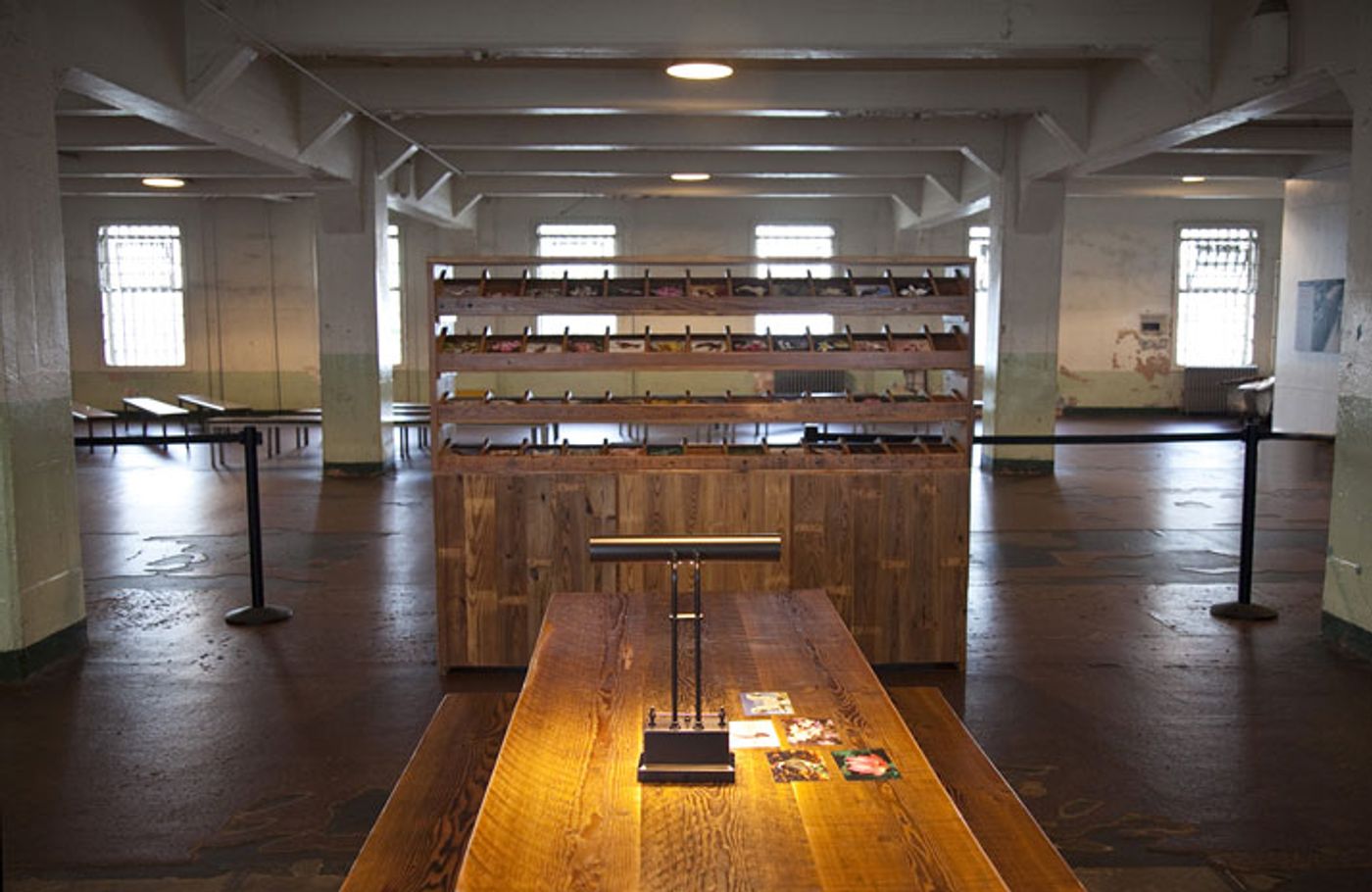
Ai Weiwei, Yours Truly, 2014 (installation view, Alcatraz Dining Hall); photo: Jan Stürmann.
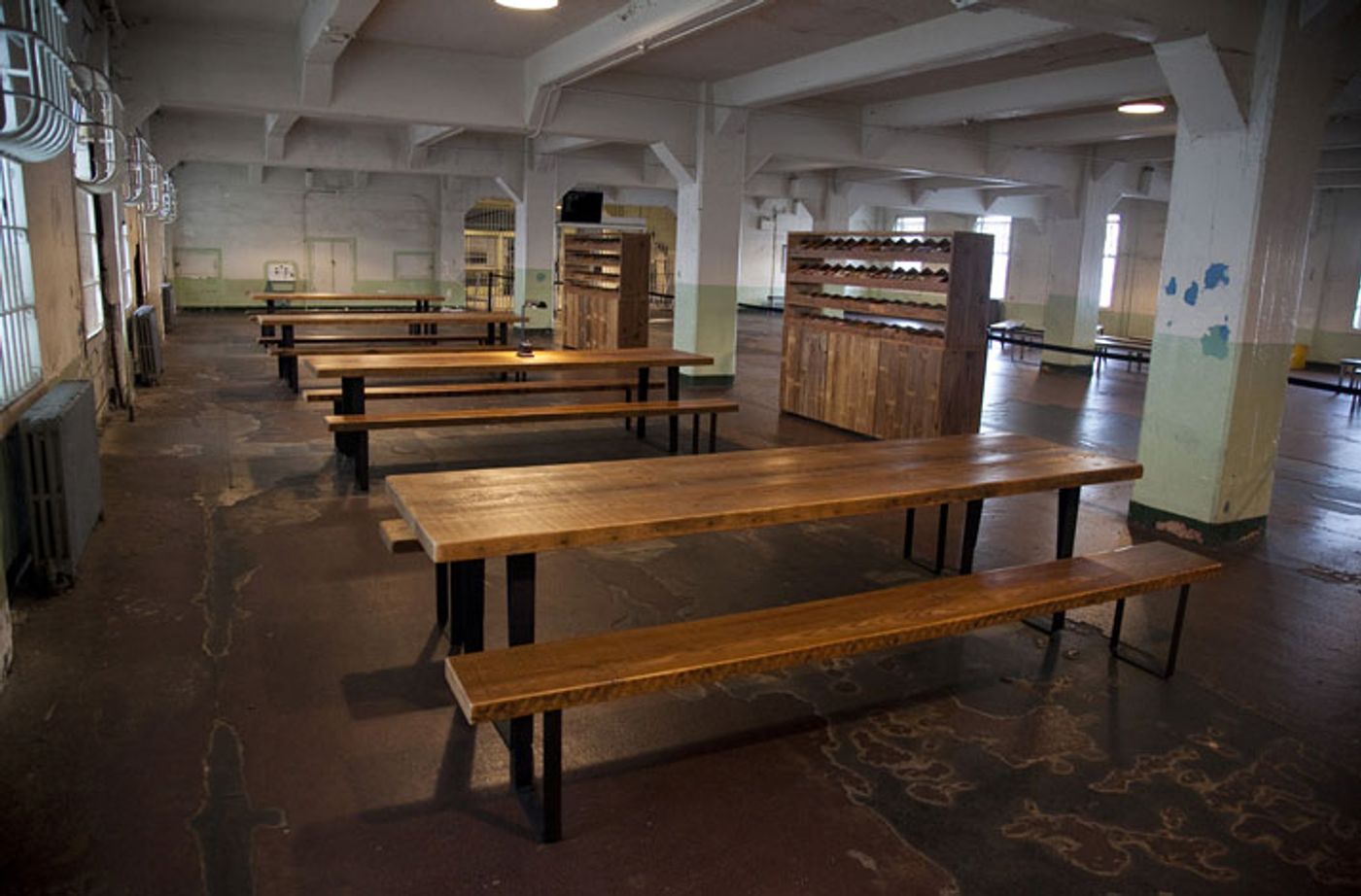
Ai Weiwei, Yours Truly, 2014 (installation view, Alcatraz Dining Hall); photo: Jan Stürmann.
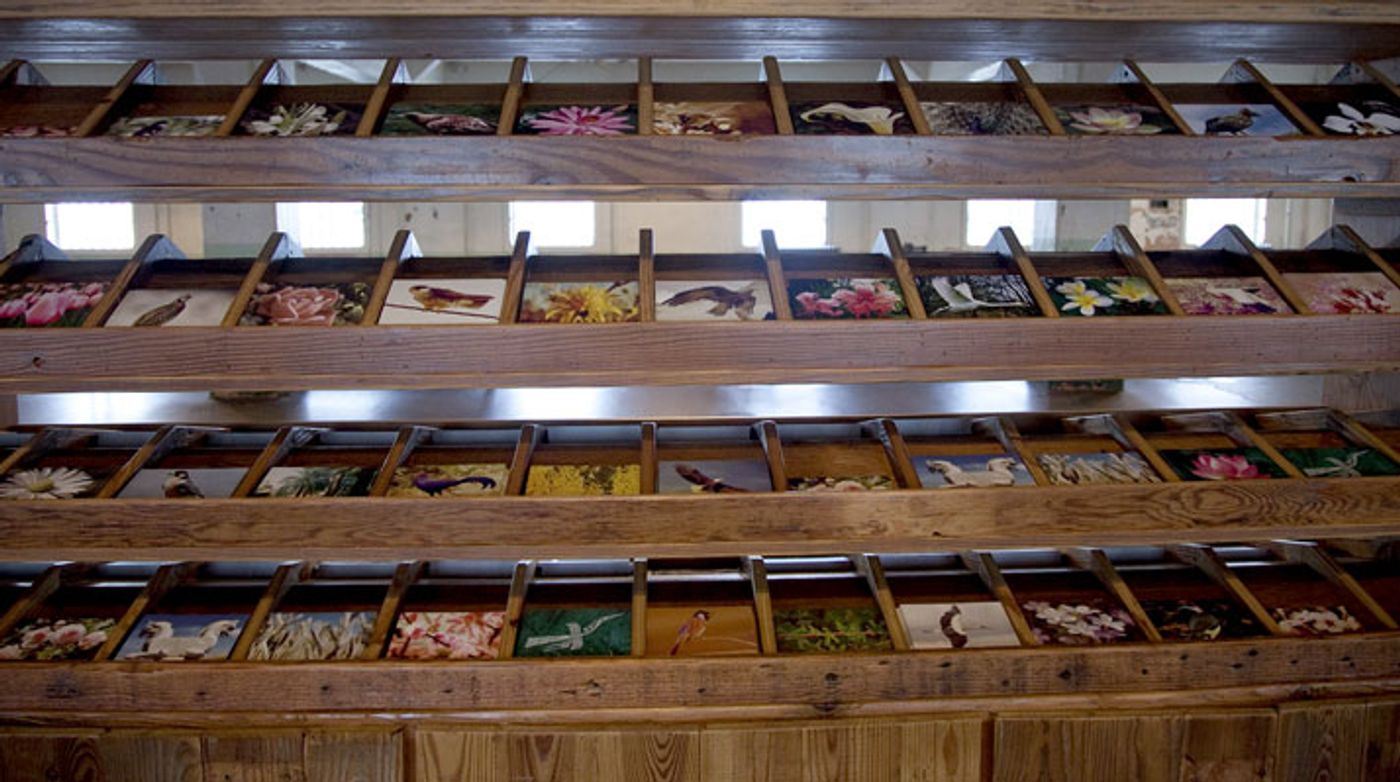
Ai Weiwei, Yours Truly, 2014 (installation view, Alcatraz Dining Hall); photo: Jan Stürmann.

